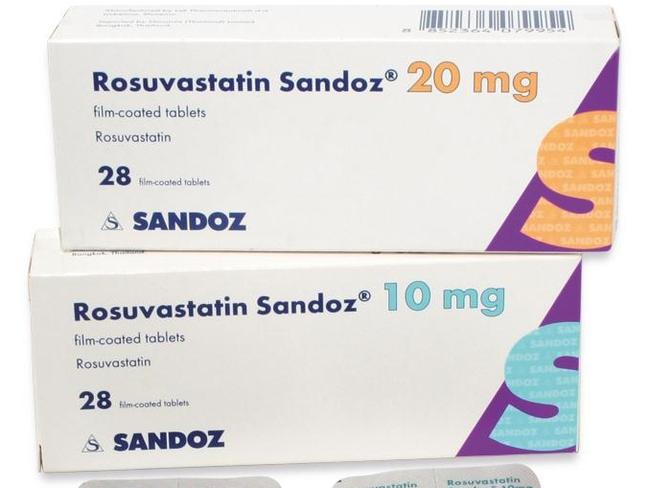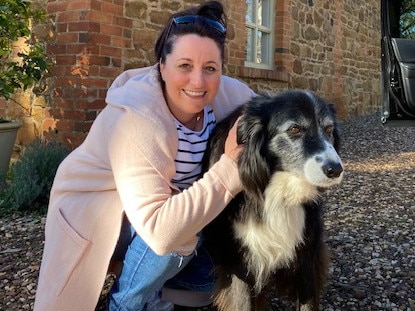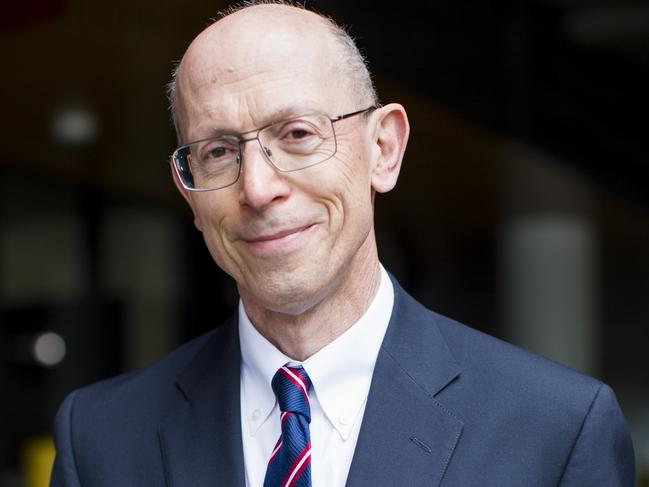How Australians can save money on prescription medications revealed
Australians could save hundreds of dollars a year on prescriptions. See the list of medicines you can save money on, and where to find the best deals.
National
Don't miss out on the headlines from National. Followed categories will be added to My News.
Australians could save more than $500 a year on their medicine bills by switching brands, shopping around and registering for a government safety net.
Two in every three Australians use prescription medicines but even though they are subsidised by the federal government under the Pharmaceutical Benefits Scheme (PBS), costs quickly add up.
ASK FOR A $1 DISCOUNT
Under the PBS, pensioners usually pay $6.80 a script for a medicine and general patients pay up to $42.50 a script.
What you probably don’t know is that the government allows chemists to discount these co-payments by $1.
If you use a pharmacy that applies the $1 discount, you could save $12 a year on each medicine you use. If you take three prescription medicines a year, you could save $36.
The discount is voluntary and the Pharmacy Guild of Australia, which represents Australia’s 3000 pharmacy owners, opposes it and wants it scrapped so most chemists do not pass it on. Chemist Warehouse is just about the only pharmacy to apply the $1 discount.
SWITCH TO A GENERIC BRAND
The second way you can save on your medicines is by switching to a generic brand. Often the original brand name medicine can cost more than $5 more than the cheaper generic version.
The most commonly used medicines on the PBS all have a generic alternative. If you use the antidepressant Zoloft, you will pay a $5.51 premium to get that brand of the drug. If you switched to a generic version that contains the same chemicals, you would pay less and save yourself over $66 a year.
The most commonly prescribed medicine on the PBS is cholesterol-lowering medicine rosuvastatin. The brand name version Crestor costs $3.45 more than the generic version.

REGISTER FOR THE PBS SAFETY NET
The third way you can save money on your prescription medicines is to register for the patient safety net, which helps you pay less for medicines once you spend a certain amount each year.
Each calendar year, pensioners who spend more than $244.80 on PBS prescription medicines get them free once they have spent this much. General patients will see the price of their medicines drop from $42.50 to just $6.80 a script once they have spent more than $1457 on medicines in a calendar year. Ask your pharmacy to keep a record of how much you spend on medicines so you know when you reach the safety net.
You can get a safety net card that entitles you to cheaper medicines once you pass the spending threshold by applying here: www.servicesaustralia.gov.au/pb240
GET UP TO 70 PER CENT OFF YOUR MEDICINES BY SHOPPING AROUND
The fourth way you can save on your medicines is to do some old-fashioned shopping around to find the cheapest chemist. If you are a general patient, this is how you can make the biggest savings because some suburban chemists will charge prices that are 3½ times higher than discount pharmacies.
For example, a suburban pharmacy is likely to charge $21.56 for the nation’s top selling prescription medicine, rosuvastatin, which is a cholesterol-lowering drug.
At Priceline, the same medicine costs $9.95, while Chemist Warehouse charges just $5.99.
Over a full year, this medicine would cost you $71.88 at Chemist Warehouse versus $258.72 at a suburban pharmacy – a saving of $186.84 a year.
The antidepressant escitalopram costs $20.37 at suburban pharmacies but just $8.50 at Priceline and $5.80 at Chemist Warehouse.
This means you could save more than 70 per cent ($174.84 a year) on this medication by shopping at a discount pharmacy.

Pensioners and concession card holders pay much lower prices for medicines so can’t benefit to the same extent. But they can save $1 a script if they find a pharmacy that passes on the $1 discount.
If a general patient with heart disease and depression was taking three prescription medications they could save over $500 a year on their medicines by using these tips.
If they currently shop at a suburban pharmacy and use brand name drugs they could be paying up to $21.56 per month for cholesterol lowering Crestor, $21.06 for blood pressure medicine perindopril and $19.97 for the antidepressant Zoloft. A total bill of $751 a year.
If they switched to using generic medicines and shopped at Chemist Warehouse their cholesterol medicine would cost $5.99 per month, their blood pressure medicine $5.99 and their antidepressant $5.80. A total bill of just $213 per month. They would save $537 a year on their medicines.
MORE CHEAPER MEDS FOR SENIORS FROM SEPT 20
Tens of thousands of retired Australians will also be able to save on the cost of medicine from next month when the Labor Party honours an election promise.
Under changes that come into effect on September 20 50,000 wealthier self-funded retirees will for the first time be eligible for a Commonwealth Seniors Health Card that will give them access to larger prescription medicine subsidies.
The income limits for the card will increase from $57,761 to $90,000 for singles and from $92, 416 to $144,000 for couples (combined).
People with the card will pay just $6.80 for their PBS medicines instead of up to $42.50 and they will qualify for the PBS safety net once they spend more than $244.80 on PBS prescription medicines in a calendar year.
To apply for the card go to Services Australia
CHANGES THAT WILL AFFECT MEDICINE PRICES
In coming months, major changes in government policy will affect how much general patients pay for medicines.
The price of nearly 900 prescription medicines is set to rise on October 1 under a deal struck with the generic-medicines industry to overcome drug shortages.
The nation’s biggest selling scripts, including cholesterol-lowering statins, antibiotics, antidepressants, reflux treatments and diabetes drugs, will increase in price by up to several dollars a script. Pensioners and concession cardholders will not be affected by the price rises and will continue to pay the set charge of $6.80 a script.
Discount pharmacy chain Chemist Warehouse has pledged it will not increase the prices it charges for these medications.
However, the Health and Ageing Department has warned: “The price increases may result in an increase to the maximum general patient charge for medicines that receive a price increase.”
The Pharmacy Guild has also warned: “Some patients without a concession card may see one-off increases in the price charged for some medicines.”
On January 1 next year, the price of some medicines will fall by $12.50 when the government honours an election promise to cut the maximum co-payment for general patients from $42.50 to $30. But most medicines will not be affected by the change because almost three in every four scripts dispensed to general patients under the PBS already cost less than $19.
Medicine costs are now so high patients are having heart attacks because they can’t afford to buy them, the Baker Heart and Diabetes Institute has warned.
“I wouldn’t say it’s often but, yes, I’ve certainly seen it, affordability of medications is a significant issue,” Director of the institute Professor Tom Marwick said.
Heart failure patients could be taking six medications a day and those who also have diabetes up to ten pills per day, he said.
The bills for someone who is not on the pension can be enormous.
“Quite frequently in clinic I find that somebody’s not adhering to their medication because it’s too expensive,” he said.
The most catastrophic scenario was in people who had a coronary stent put in after a heart attack, he said.
If they failed to take their blood thinner medications “there’s a risk of a clot forming on the stent, which is really a catastrophic event, they can have the vessel completely block off and have a substantial heart attack,” he said.

Mother of three Samantha Grima was aged just 47 and led a healthy lifestyle when she was struck down by a heart attack in January that left her with a $50 a month medicine bill.
The primary school teacher didn’t smoke, barely drank and did regular exercise when “out of the blue” she collapsed in January just as Victoria’s hospital system was overwhelmed by Covid’s Omicron variant.
“I was doing all the right things and now I’m taking medications daily,” she said.
To prevent a future heart attack Ms Grima is on two blood thinners, cholesterol pills, a tablet to control her heart rate and an angina medication.
“Initially, one of the drugs I was prescribed, wasn’t covered by the PBS so that was $50 itself,” she said.

“I’m no longer on that drug. It’s been replaced by another one that is on the PBS. So it’s roughly about $50 a month that I’m looking at for medications a month,” she said.
She is aware she could save money by shopping at a discount chemist and knew of the medicines safety net but has not yet registered for it.
“I do think some of my medication from those sort of bigger chains but I also support my community pharmacy which knows me very well and I feel quite comfortable getting my medications from there and trust in their service,” she said.
“I work full time, we’re a two income household but it’s not to say that we’re not feeling the pinch, particularly in food prices,” she said.
“We’ve got a family of five we’ve got, you know, some big mouths to feed, I’ve got all boys. So we go through a lot in household bills and groceries and I suppose medication costs is just an added cost, but I don’t feel like it’s something that’s negotiable. It’s something I have to do,” she said.
More Coverage
Originally published as How Australians can save money on prescription medications revealed





